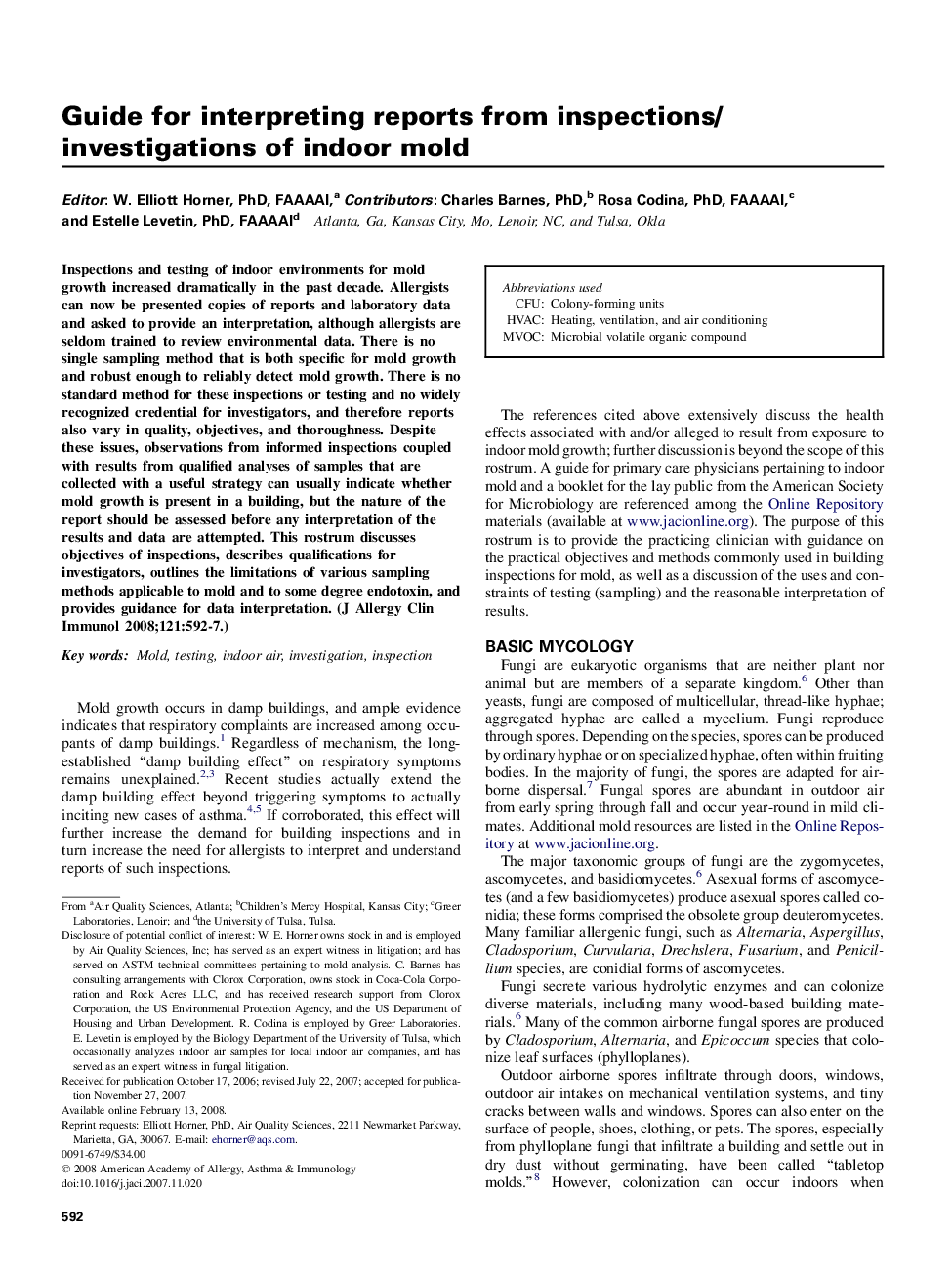| Article ID | Journal | Published Year | Pages | File Type |
|---|---|---|---|---|
| 3200707 | Journal of Allergy and Clinical Immunology | 2008 | 13 Pages |
Abstract
Inspections and testing of indoor environments for mold growth increased dramatically in the past decade. Allergists can now be presented copies of reports and laboratory data and asked to provide an interpretation, although allergists are seldom trained to review environmental data. There is no single sampling method that is both specific for mold growth and robust enough to reliably detect mold growth. There is no standard method for these inspections or testing and no widely recognized credential for investigators, and therefore reports also vary in quality, objectives, and thoroughness. Despite these issues, observations from informed inspections coupled with results from qualified analyses of samples that are collected with a useful strategy can usually indicate whether mold growth is present in a building, but the nature of the report should be assessed before any interpretation of the results and data are attempted. This rostrum discusses objectives of inspections, describes qualifications for investigators, outlines the limitations of various sampling methods applicable to mold and to some degree endotoxin, and provides guidance for data interpretation.
Keywords
Related Topics
Life Sciences
Immunology and Microbiology
Immunology
Authors
W. Elliott (Editor), Charles (Contributor), Rosa (Contributor), Estelle (Contributor),
